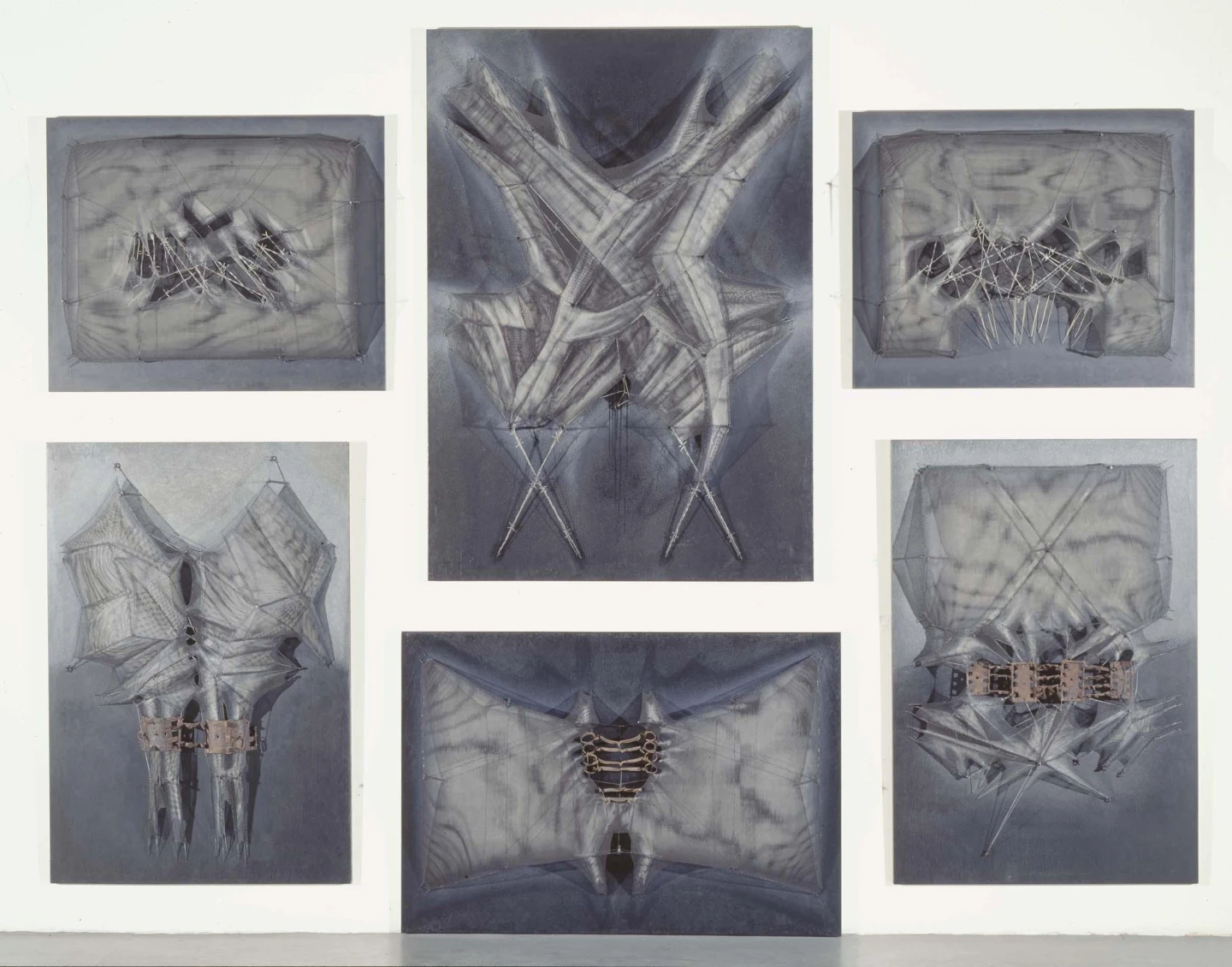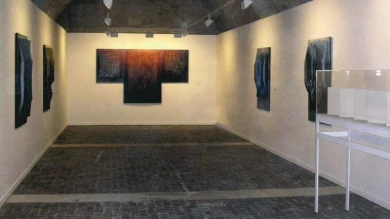Manuel Rivera

<p></p>
This exhibition brings together more than seventy works, including two sketches of sculptures and twenty-something drawings (a little known side to the painter) and reviews the career of one of the leading artists who, with arguments supported by Informalism, defends matter for its own sake. With a strong will to experiment, he develops a new grammar by turning wire into a means of expression and in very little time it is considered an aesthetic material. His work is recognised early at the Sao Paulo Biennale (1957) and of that in Venice (1958) and exemplifies the triumph of the breakdown of traditional values and principles of painting, such as the use of brushes, canvas, rules of composition, etc. Also, Rivera's work illustrates the crisis of easel painting, which made up much of the international art practices after the Second World War, as with the spatiality of Lucio Fontana’s ideas.
Rivera's work is based on the relationship between space and light that he creates with wires. In 1956 he paints on a single plane by tightening the fabric on a frame of iron or wood. In these paintings we can already see fundamental expressive components: the tension and drama focused on the two-coloured combination, white (background) and black, as in Composición 8 (1956-1957) and the series Metamorfosis, which he begins in 1958.
By increasing the width of the racks he creates on two planes and begins creating his concept of space. The inclusion of screwed in pivots serves to add more planes without over filling the surface. It is the light -the optical vibrations which cause a moiré effect and working through glazes of claroscuro (light-dark)- which creates the shapes and forms and as pointed out by his daughter Marisa Rivera, manages to "transmute matter into an emotion without boundaries", as seen in Espejo hechizado (1963) or the Estorzuelo series (1993). Despite the three-dimensional effects, Rivera works his sculptural enthusiasm and insists that everything comes from the properties of light and material.
In the mid-sixties, he begins to use oil in his paintings as a dramatic device, reducing the palette to red, black, blue and green as seen in Metamorfosis. Huella en el espejo. Num. 7 (1974) and Oráculo 9 (1990). It has the same end when adding items such as hooks, buckles, or wire, which symbolically stitched wounds or allude to tearings, like in Retablo para las víctimas de la violencia (1977). Creating in diptychs and triptychs also adds to his pieces an almost religious and dramatic essence and transforms them into large dramatic machines, many titles, such as Me duele España (1964-1966) or Espejo traje de noche para la muerte (1980-1981) refer to the Francoist repression and the contemporary situation of the country.
Artists
Casa del Águila y de la Parra, Santillana del Mar (July 4 - September 4, 1997); Palacio de los Condes de Gabia, Granada (September 18 - November 30, 1997)
Organised by
Museo Nacional Centro de Arte Reina Sofía
Image gallery

Itinerary
Museo Nacional Centro de Arte Reina Sofía, Madrid
22 April, 1997 - 16 June, 1997
Casa del Águila y de la Parra, Santillana del Mar
4 July, 1997 - 4 September, 1997
Palacio de los Condes de Gabia, Granada
18 September, 1997 - 30 November, 1997
